FIR Compiler v7.2
Table of Contents
IP Facts
Ch. 1: Overview
Feature Summary
Feature Support Matrix
Notable Limitations
Licensing and Ordering Information
Ch. 2: Product Specification
Performance
Maximum Frequencies
Latency
Throughput
Resource Utilization
Port Descriptions
Ch. 3: Designing with the Core
Clocking
Resets
AXI4-Stream Considerations
Basic Handshake
Input and Output DATA Channels
TREADY and TVALID
TDATA Structure
TLAST Options
TUSER Options
CONFIG Channel
Blocking Behavior
Packet Consumption Rate and Synchronization
TREADY
TLAST Options
TDATA
RELOAD Channel
TREADY
TLAST
TDATA
Event Interface
Interface Timing
Core Features
Filter Architectures
Multiply-Accumulate
Systolic Multiply-Accumulate
Transpose Multiply-Accumulate
Filter Structures and Optimizations
Filter Symmetry
Single-rate FIR Filter
Half-band FIR Filter
Hilbert Transform
Interpolated FIR Filter
Polyphase Decimator
Polyphase Interpolator
Half-band Decimator
Half-band Interpolator
Small Non-zero Even Terms in a Half-band Filter Impulse Response
Fixed Fractional Rate Resampling Filters
Filter Coefficient Data
Single-rate FIR
Half-band Filter
Hilbert Transform
Interpolated Filter
Multiple Coefficient Sets
Coefficient Specification Using Non-integer Real Numbers
Interleaved Data Channel Filters
Basic
Advanced
Parallel Data Channel Filters
Coefficient Reload
Reload Order File
Coefficient Quantization
Integer Coefficients
Quantize Only
Maximize Dynamic Range
Best Precision Fractional Length
Output Width and Bit Growth
Output Rounding
Full Precision
Truncation
Non-symmetric Rounding to Positive
Non-symmetric Rounding to Negative
Symmetric Rounding to Highest Magnitude
Symmetric Rounding to Zero
Convergent Rounding
Resource Implications of Rounding
Multiple Column Filter Implementation
Super Sample Rate Filters
Input and Output Sample Rate
Integer Rate Change
Fractional Rate Change
Super Sample Rate
Resource Considerations
Data and Coefficient Bit Width
Output Rounding Selection
Multiple Channel versus Parallel Datapaths
Multichannel implementation
Parallel Datapaths
Multichannel implementation
Parallel Datapaths
Coefficient Reload
Ch. 4: Design Flow Steps
Customizing and Generating the Core
IP Symbol Tab
Freq. Response Tab
Implementation Details Tab
Coefficient Reload Tab
Filter Options Tab
Channel Specification Tab
Implementation Tab
Detailed Implementation Tab
Interface Tab
Summary Tab
User Parameters
Output Generation
System Generator for DSP
Filter Specification
Channel Specification
Implementation
Interface
Constraining the Core
Required Constraints
Device, Package, and Speed Grade Selections
Clock Frequencies
Clock Management
Clock Placement
Banking
Transceiver Placement
I/O Standard and Placement
Simulation
Synthesis and Implementation
Ch. 5: C Model
Unpacking and Model Contents
Installation
Linux
Windows
C Model Interface
Constants
Type Definitions
Dynamic Arrays
Structure
General Functions
FIR Compiler Specific Functions
Structures
Functions
Model Configuration Functions
Model Operation Functions
Compiling
Linking
Linux
Windows
Example
MATLAB Interface
Compiling
Installation
MATLAB Class Interface
Constructor
Get Version
Get Configuration
Reset
Send CONFIG Packet
Send RELOAD Packet
Filter
Example
Dependent Libraries
Ch. 6: Test Bench
Demonstration Test Bench
Using the Demonstration Test Bench
The Demonstration Test Bench in Detail
Customizing the Demonstration Test Bench
Simulation
Appx. A: Migrating and Upgrading
Migrating to the Vivado Design Suite from ISE
Parameter Changes
Updating from FIR Compiler Versions 6.0 through 6.3
Updating from FIR Compiler v5.0
Port Changes
Functionality Changes
Latency Changes
Instructions for Minimum Change Migration
Parameters
Ports
Upgrading within the Vivado Design Suite
Parameter Changes
Port Changes
Simulation
Appx. B: Debugging
Finding Help on Xilinx.com
Documentation
Answer Records
Technical Support
Debug Tools
Vivado Design Suite Debug Feature
Reference Boards
C-Model Reference
Simulation Debug
AXI4-Stream Interface Debug
Appx. C: Additional Resources and Legal Notices
Xilinx Resources
References
Revision History
Please Read: Important Legal Notices
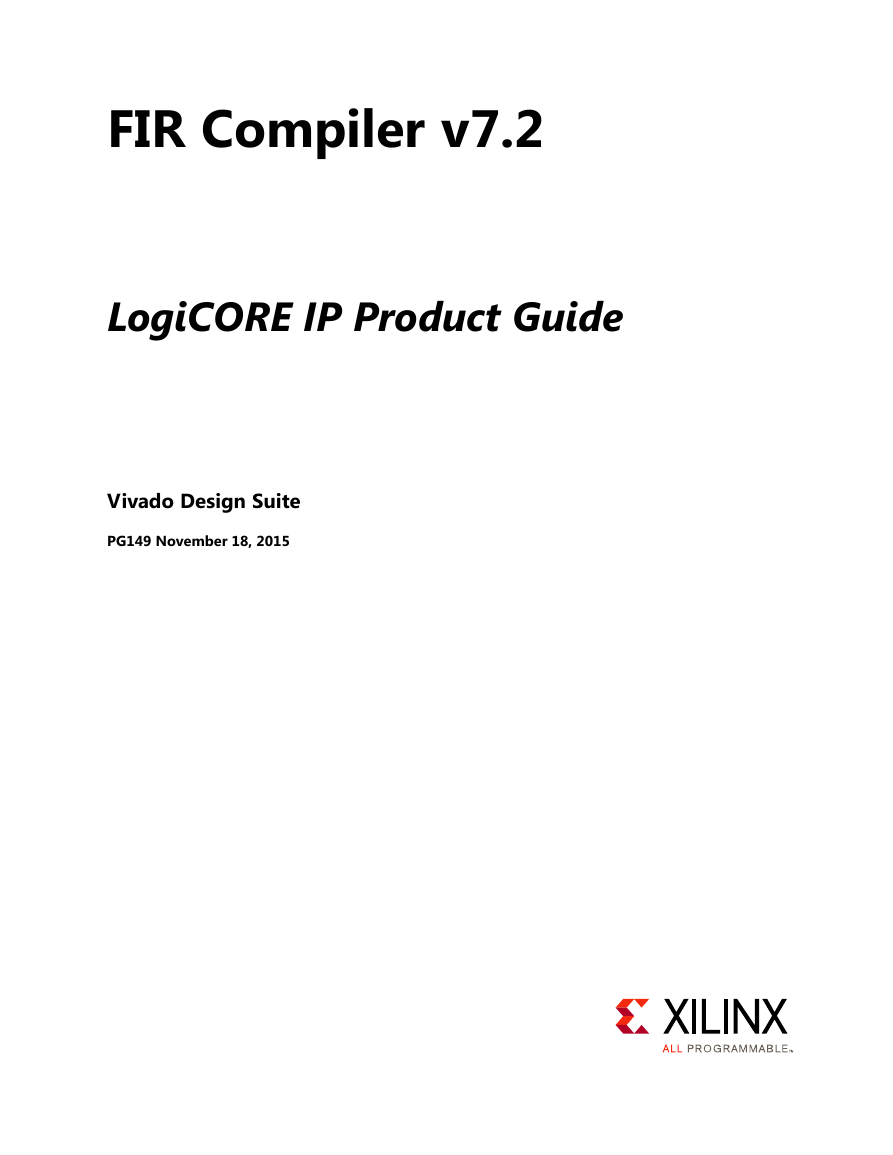

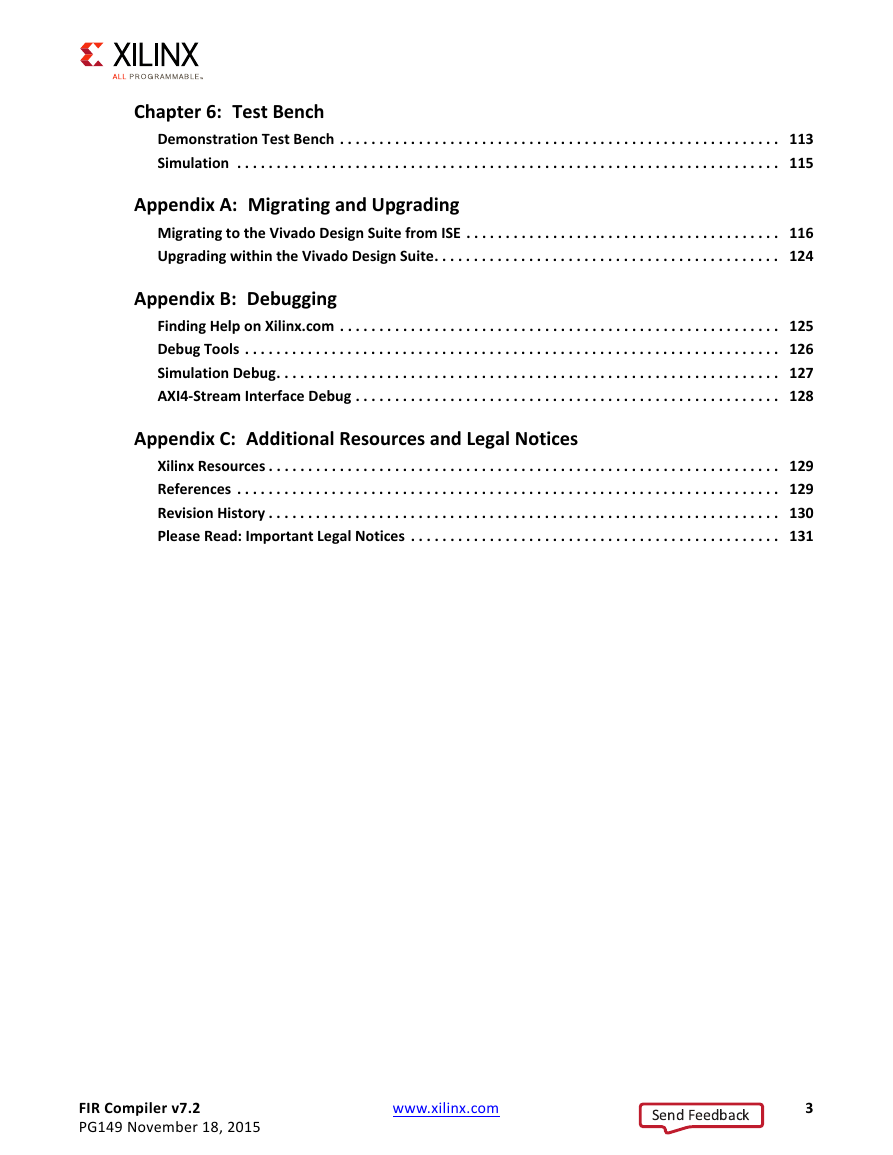

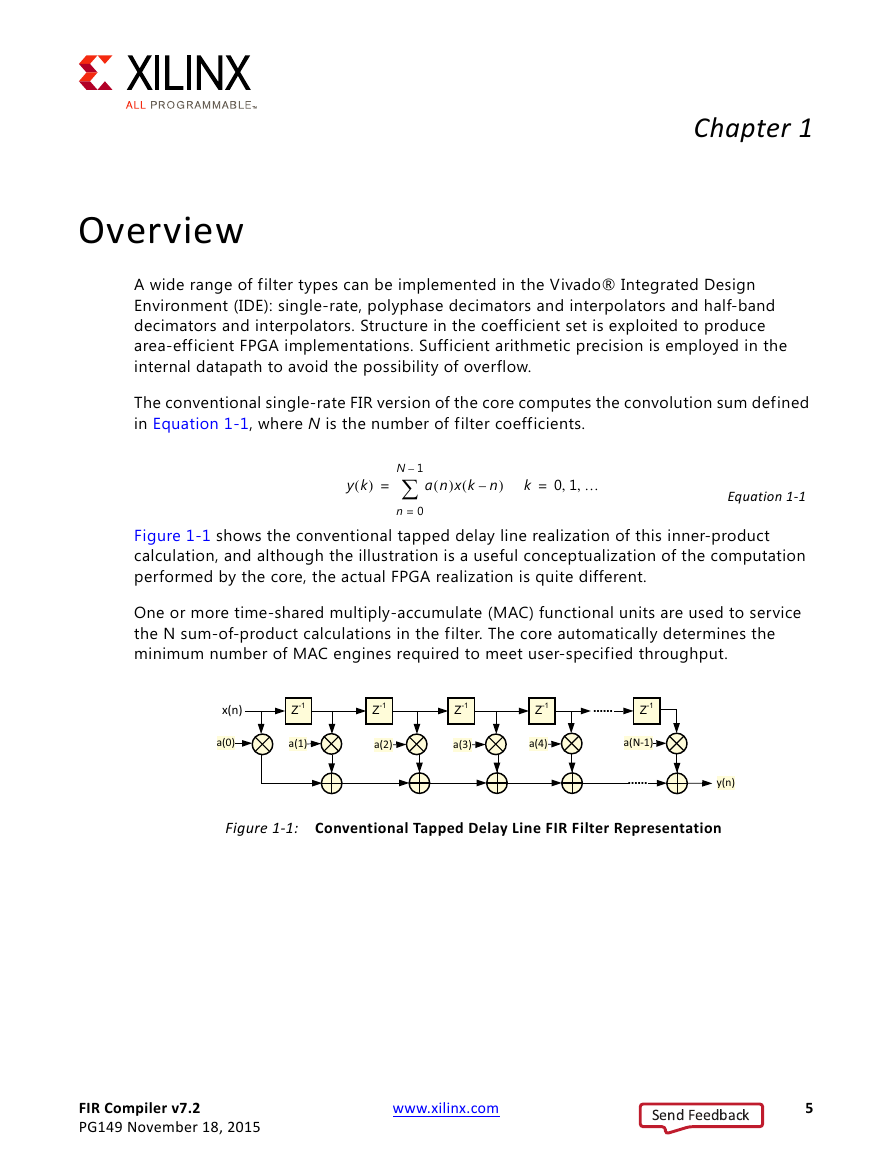

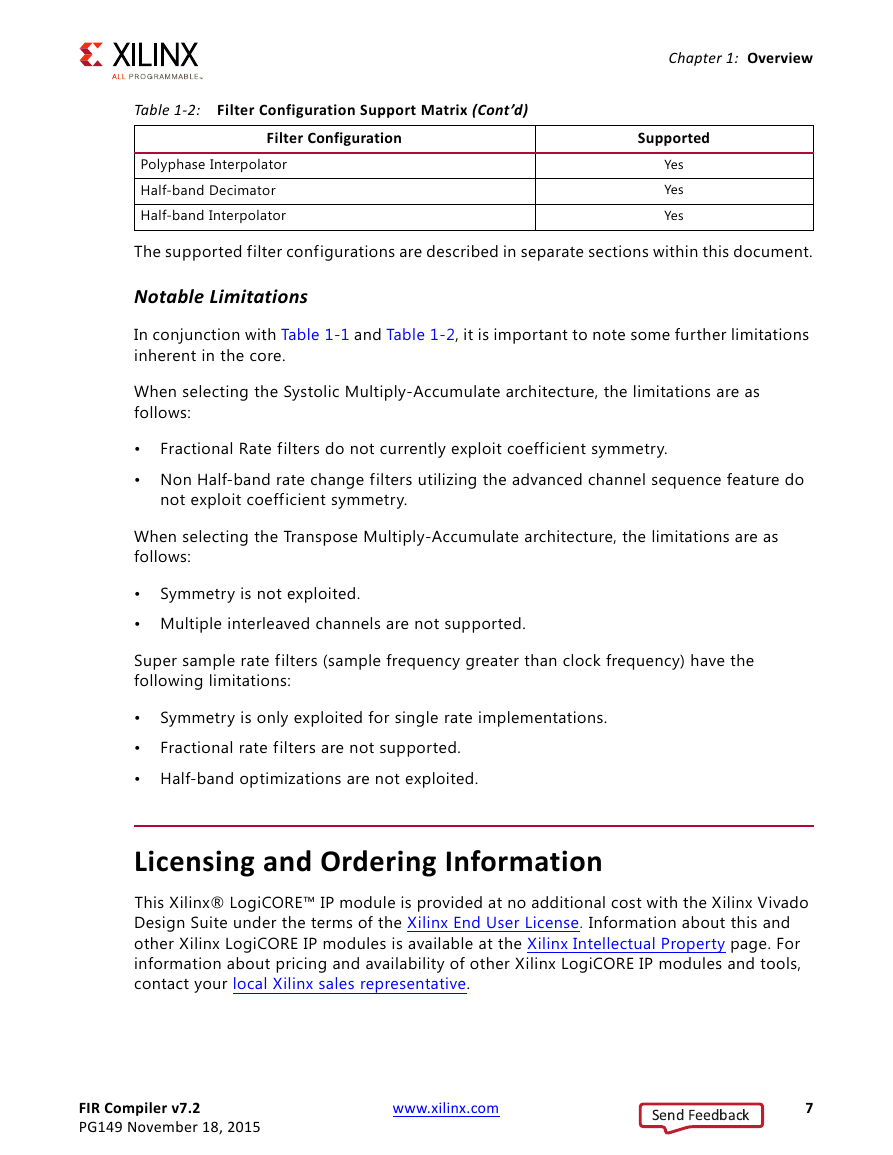
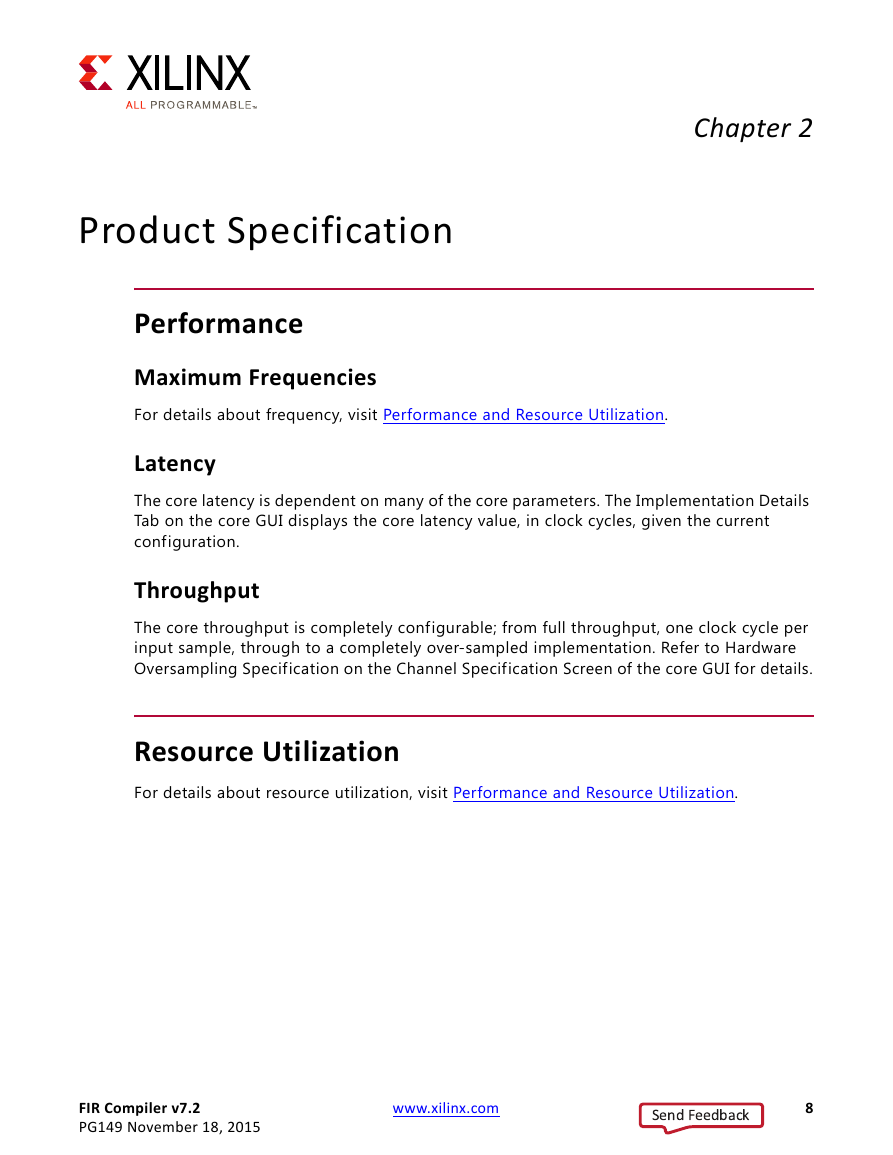








 2023年江西萍乡中考道德与法治真题及答案.doc
2023年江西萍乡中考道德与法治真题及答案.doc 2012年重庆南川中考生物真题及答案.doc
2012年重庆南川中考生物真题及答案.doc 2013年江西师范大学地理学综合及文艺理论基础考研真题.doc
2013年江西师范大学地理学综合及文艺理论基础考研真题.doc 2020年四川甘孜小升初语文真题及答案I卷.doc
2020年四川甘孜小升初语文真题及答案I卷.doc 2020年注册岩土工程师专业基础考试真题及答案.doc
2020年注册岩土工程师专业基础考试真题及答案.doc 2023-2024学年福建省厦门市九年级上学期数学月考试题及答案.doc
2023-2024学年福建省厦门市九年级上学期数学月考试题及答案.doc 2021-2022学年辽宁省沈阳市大东区九年级上学期语文期末试题及答案.doc
2021-2022学年辽宁省沈阳市大东区九年级上学期语文期末试题及答案.doc 2022-2023学年北京东城区初三第一学期物理期末试卷及答案.doc
2022-2023学年北京东城区初三第一学期物理期末试卷及答案.doc 2018上半年江西教师资格初中地理学科知识与教学能力真题及答案.doc
2018上半年江西教师资格初中地理学科知识与教学能力真题及答案.doc 2012年河北国家公务员申论考试真题及答案-省级.doc
2012年河北国家公务员申论考试真题及答案-省级.doc 2020-2021学年江苏省扬州市江都区邵樊片九年级上学期数学第一次质量检测试题及答案.doc
2020-2021学年江苏省扬州市江都区邵樊片九年级上学期数学第一次质量检测试题及答案.doc 2022下半年黑龙江教师资格证中学综合素质真题及答案.doc
2022下半年黑龙江教师资格证中学综合素质真题及答案.doc